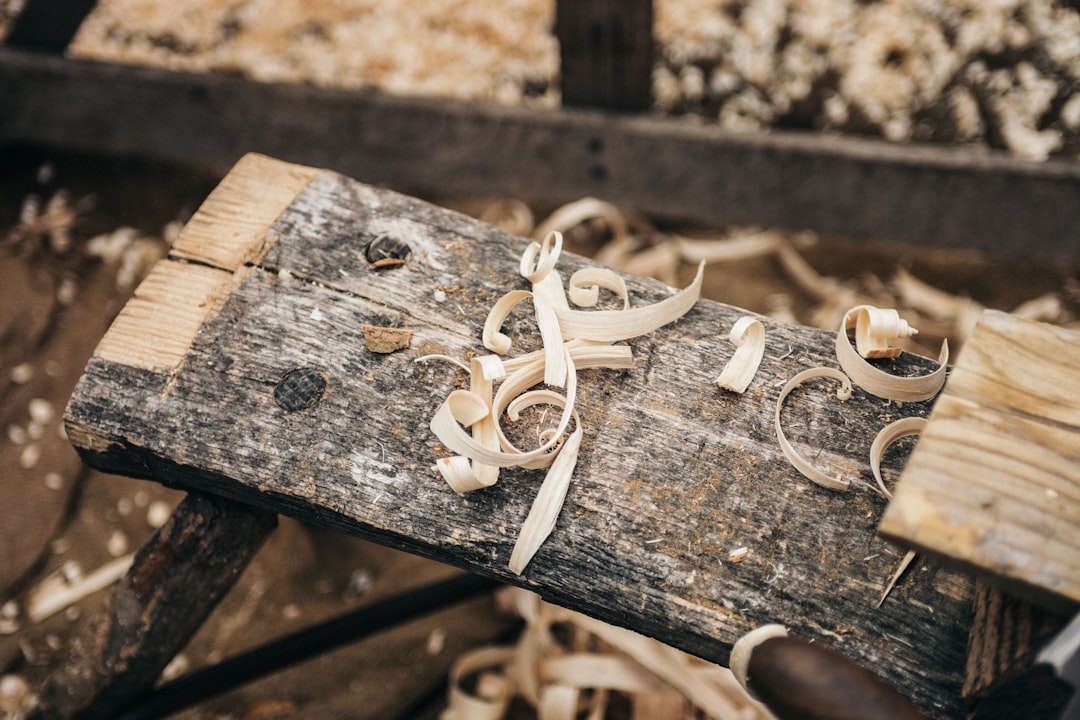
Once, God was a carpenter.
The One who gave wood life with His breath first gave it shape with His mind. The Word who blessed wood with His blood blessed it first with His hands. For He bears the perfect image of His Father, and His Father is a maker. So His Father gave Him to a maker for adoption, made the Divine Maker’s Son a mortal maker’s apprentice.
Thirty years in that workshop, and of that time the Word says nothing. Perhaps few words were shared over the sound of chisel, saw and hammer. The odd word of instruction, the name of a kind of hammer or of joint, but scarce, for handiwork is better taught by hand and eye than mouth. The odd oath uttered in frustration at work badly done, or in pain at a misplaced blow or splinter, the odd joke and laugh together. But more sound comes from the wood than the men. They work in the silence of the furrowed brow and clever hand, the smell of healing cedar.
To make is godly: to make, and not to destroy.
To make is to grow in the likeness of the Maker.
There are those would distinguish making from creation. St Thomas says that man makes but cannot create, scoring a dark line between creator and creature. The line is thinner for the Fathers of the East. To them, God is present in the world by His uncreated energies. Energy, energeia is a compound of en and ergon, that Greek word which the Homeric scholar will tell you was once wergon, and when so read is more clearly cognate with its English relative work. So en-ergy is in-working, God’s working in the world. Energy is thus also theurgy, theiou-ergon, the work of God; and that energy is realised in the world by liturgy, leito-ergon, the public work of worship.
It is in the Divine Liturgy of the Eucharist that mortals manifest most clearly one further compound of ergon: synergy, work-with, co-operation or collaboration with God. This need not offend minds trained to sunder faith from works. For in the Eucharist, it is not we who live, but Christ who lives in us. The Church is most truly the Body of Christ when it is gathered before the altar. In the action of the Eucharist, our lips sing His psalms, our hands become His hands, bread becomes His body, wine His blood, the wood of the altar the wood of His Cross. It is there that we realise what we are truly called to be: one with God through Christ, divinised, perfected. There is no ours and His, for we are one. There is no now and then, no second sacrifice, but a participation in the first and only.
This we learn not in words but in action, in our active participation in the offering. We offer our souls and bodies to be a living sacrifice not in words but through the lifting of our hearts, a lifting led by the Holy Spirit. We offer them not instead of bread and wine, but as one with the Body and the Blood in which we share. The silence after the final bell and elevation renders objections otiose. We learn more in the moment of touch and taste than tomes can teach. We learn from the Master who dwells within.
We make because we are made in the image of the Maker. And yet, the line, however thin, remains. We are not Him. We may at most be like Him, but He is not like us. His energies we may know by His makings in the universe and our partnership in them, but His essence remains beyond all imagining. All images of Him must in the end be denied.
God calls Himself the one who Is, but if God is a being, then we are not; and if we are beings, then God is not.
Holy writ calls God a rock, and so He is, but far more so, He is not; it calls God light, and so He is, but far more so, He is not.
The Divine Word calls Himself a worm, and perhaps this is a better name, because it is so slippery and hard to grasp: noli me tangere!
But best of all, we know Him three and one, because by being both, He must be neither.
The line is thin but uncrossable, save by the one whose cross bridges it. If we are to be more than mere “makers” in the Angelic Doctor’s lesser sense, and to be makers as creators, co-creators with God, then we must lend our hands to Him. Like the Buddhist sculptor seeking Amida hiding in the wood she carves, our calling in creation is not to impose meaning, but to find it.
It is to know real things from their shadow and to show them as such.
It is to look at any tree and see the true tree with its roots in hell and boughs in heaven, and by one’s art to guide those who would climb it.
It is to break words and release their fragrance.
It is to make for the joy of making and is the opposite of mere mechanism. Not to make useless things, still less to make things useless, but to make things for their highest use: for grace perfects. To make of wood a window to the saints, to make of wheat meat which will surpass the bread of angels, to make of grapes a more healing draught than honey. For by God’s grace, such sweetness can come even from the carcass of a lion.
I wonder: did the woodworker in Nazareth ever make a cross?



